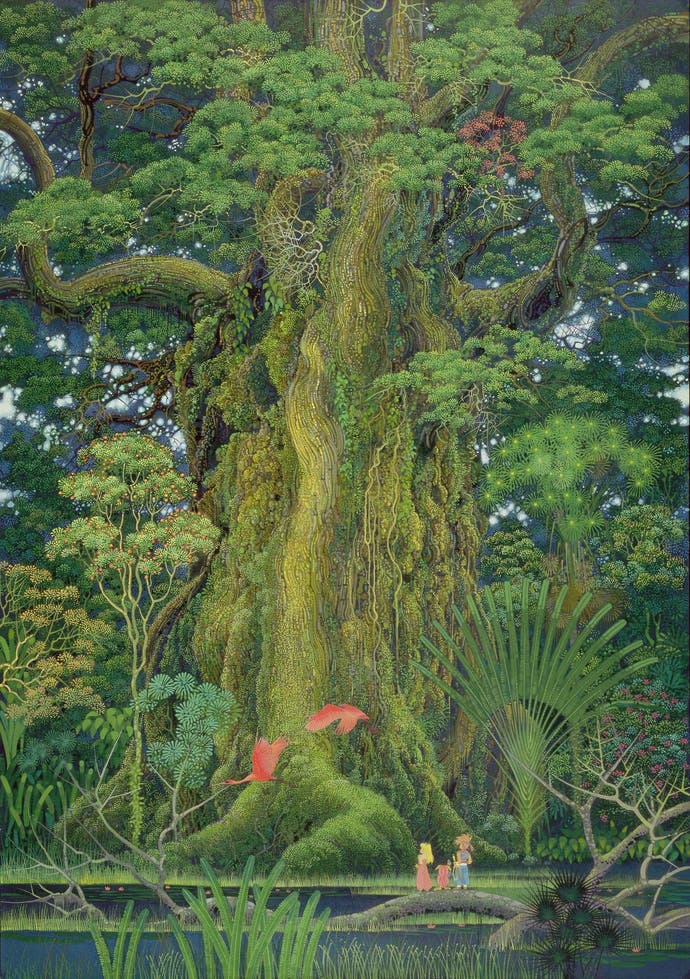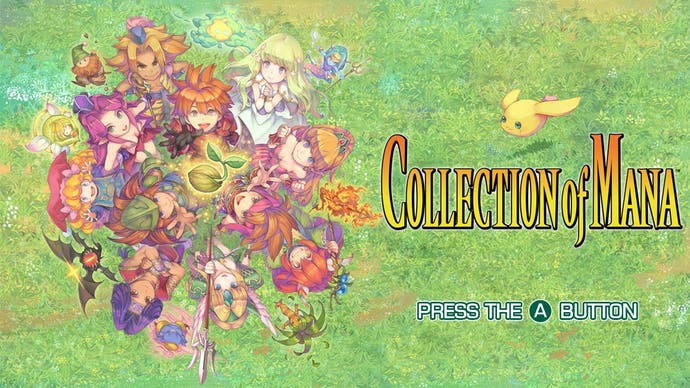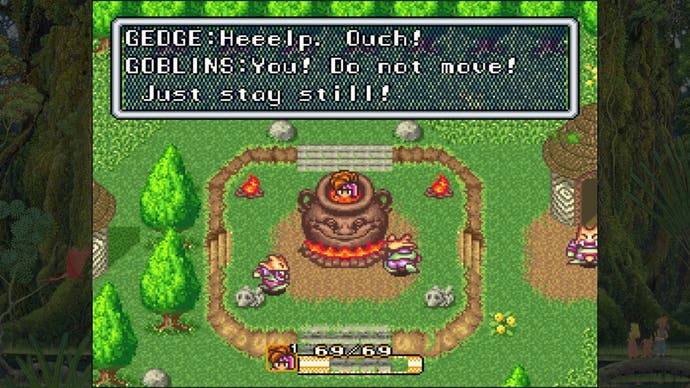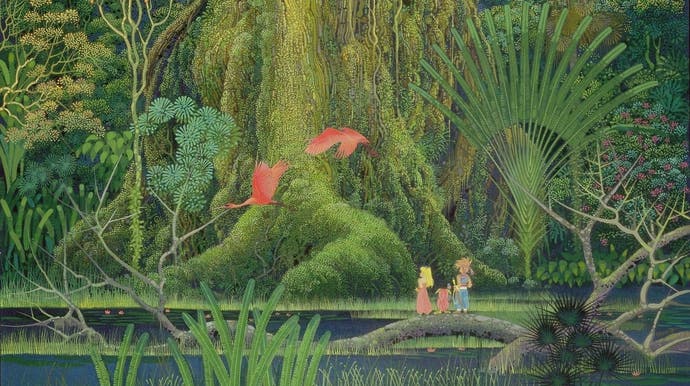Secret of Mana and the art of a good box
Heaven sent.
We don't talk about box art so much around these parts any more. Maybe that's because we don't see much by way of video game boxes anymore - they're fast becoming a thing of the past, for better and for worse. Playing the surprise Switch release of The Collection of Mana recently, though, I was reminded of the power of a strong piece of cover art - and of an artform that's in danger of being lost.

I never played Secret of Mana first time around in the 90s, though it's lodged in my consciousness just as firmly as all those SNES classics that I did. It's one of those games that was a constant presence on shelves of game stores - remember them! - usually nestled behind the counter, a luxurious item that was available on import those long months it took to finally come to Europe.
There was always something special about Square's 16-bit RPGs of the time - something exotic, these entire universes condensed into a single cart, and that feeling was only underlined here in Europe by how expensive these things were. For most ordinary 11-year-olds, unless you got lucky and had a friend with rich parents, these things were almost entirely out of reach. And, when you're a kid, when something's out of reach you tend to fixate on it.
I'm not going to argue about what the best 16-bit era Square RPG was - they've all got their merits - but I think it's safe to say one piece of cover art stands tall against all others. There's something hauntingly beautiful about Secret of Mana's cover, a dense forest scene that hints towards the richness held within. It's at once graceful and alien - as the very best fantasies often are - and executed with an impeccable sense of style (and it's by the Japanese artist Hirō Isono, who sadly passed away in 2013. I'd recommend seeking out his other work, as it all possesses the same ethereal beauty). I'd often just stop and stare at it as it sat there on the shelf, imagining the adventures Secret of Mana could offer.

It's odd, then, coming to a game all these years later, and one that you're already played through in your mind, and playing it for the first time. Odder still - and a testament to Secret of Mana's eternal brilliance - is that the experience matches up to the imagined one. There's a colour and vibrancy to Secret of Mana that hasn't dulled over time. It's there in Hiroki Kikuta's bouncy soundtrack, it's there in its verdant forests, and it's most definitely there in its off-kilter action.

Secret of Mana is a strange game to play, with its hybrid of Zelda-like action and more traditional RPG elements. I'm not sure it quite works - there are a number of kinks and quirks that were ironed out for its sequel, released in the west in this collection for the first time as Trials of Mana - but its leftfield approach only helps make it stand the test of time better than many of its contemporaries. The radial menu feels eerily modern, even if the combat itself can feel a little wooly.
It's as fantastic to play now as it was back in its day, essentially - or, at least, I'm having plenty of fun playing through it for the first time, and the surprise release of The Mana Collection, and the even bigger surprise of having a localised version of its sequel for the first time in the west, was undoubtedly one of E3's highlights. What a pleasure it is to have all these games together - even if the collection is a little pricey, and the barebones presentation and features means it isn't exactly porting studio M2's finest work.
Still, it's all a damn sight cheaper than the originals were back in the day, and their charm hasn't dimmed in the slightest. You should never judge a game by its cover, of course - but what a thrill to discover, all these years later, that Secret of Mana does its exquisite cover art justice.

